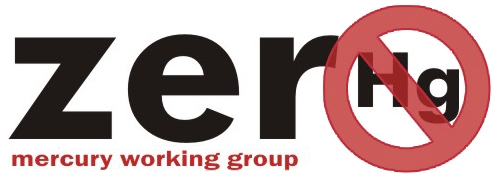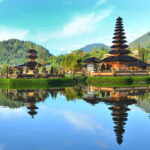Fourth Conference of the Parties of the Minamata Convention on Mercury - second Segment (COP4.2), 21-25 March 2022, Bali, Indonesia
All UN Environment relevant documents and details about the meeting can be found at the dedicated UNEP webpages.
ZMWG Views on COP4.2 Decisions (March 2022)
This paper summarizes the recommendations of the Zero Mercury Working Group (ZMWG) on the anticipated decisions at COP4.2. We highlight only the priority issues, and the key points on these issues. We encourage COP4.2 delegates to consult with ZMWG representatives for more details or positions on documents not discussed below.
In the following document you can find the ZMWG recommendations on:
- Proposed Revisions to Annex A and B;
- Setting Waste Thresholds under Article 11;
- Reporting;
- Effectiveness Evaluation; and
- Harmonized Custom Codes
You can also find these recommendations in Spanish, French and Portuguese.
February 2022 - ZMWG Recommendations going into the COP4.2 Regional meetings - English, Spanish, French and Portuguese.
ZMWG Blog – April 2022
Summary of the second segment of the fourth Conference of the Parties (COP4.2) for the Minamata Convention on Mercury, 21- 25 March, 2022, Bali, Indonesia.
The Zero Mercury Working Group (ZMWG) main priorities for COP4.2 included the following:
- phasing out of additional mercury added products and processes via modification of Annexes A and B;
- establishing a framework for the evaluation if its effectiveness;
- establishing waste thresholds for certain mercury waste and
- adopting several guidance documents to assist implementation of Art 9 on Releases, Art. 7 on ASGM as well as HS codes.
COP4.2 made several decisions along the lines of our recommendations, among others.
Under Annex A, part I:
Button cell Batteries - While a decision to phase out mercury added button cell batteries was in principle agreed to, the exact date will be decided at COP5.
Switches - While there is agreement to the phase out of, “high capacity” or “high frequency” switches or relays, the decision about the phase out date will be taken at COP 5.
Lamps - COP4.2 agreed to phase out their manufacture and trade of CFLis and CCFLs/EEFLs, by 2025.
While a decision was very close to be taken on phasing out LFLs (halophosphate and tribant phosphor), the exact date will be decided at COP5.
This is an important achievement as considerable quantities of mercury will be avoided from entering into the environment and energy will be saved. See CLiC press release.
Mercury added Measuring devices, tire balancers, wheel weights, photographic film and paper, were agreed to be phased out as well from manufacture and trade by 2025.
Satellite propulsion - Following the proposed amendment from Canada and Switzerland, supported by Norway, Parties agreed to ban the manufacture and trade of mercury use as a propellant for satellites and spacecraft by 2025. See PEER/ZMWG press release
Under Annex A, part II:
Dental amalgam - While there was general agreement on phasing out amalgam use for children, pregnant women and breastfeeding mothers, a few countries expressed concerns as a ‘shall not allow’ phrasing would not be possible to implement in their current legislative systems. To that end this mixed, but rather strong formulation was agreed ‘Shall exclude or not allow, by taking measures as appropriate, or recommend against ‘sending a clear signal that dental amalgam is not welcome any more.
Under Annex B:
Polyurethane production using mercury containing catalysts - A decision could not be made as a few parties concerned appeared not to be ready to go forward with such measures. A decision was made to have a phase out of this category under processes rather than products, but the date will only be decided at COP 5.
At the same time the Secretariat was requested to compile information on the availability and technical and economic feasibility of mercury free alternatives of the production of polyurethane using mercury containing catalysts to facilitate discussions.
In the framework of Annex B, the Secretariat was requested to prepare a short report on the technical and economic feasibility of mercury-free alternatives for the two processes (VCM and sodium methylate) listed in Part II of Annex B, requesting information from the relevant parties regarding whether the two processes continue to be utilized, whether either is scheduled to be phased out nationally, and to what extent mercury-free alternatives are technically and economically feasible. If necessary, the secretariat may request additional information from other Parties and stakeholders.
Effectiveness Evaluation (EE) - The outcome of discussions on EE was generally positive. While the Effectiveness Evaluation Group (EEG) creation was not fully launched, its terms of reference were agreed upon, but not the number of experts comprising it, which also has financial implications. Decisions on that will likely be taken at COP5.
It was also agreed that the EEG will further invite as observers, up to five (5) participants from developed and developing countries drawing from civil society, indigenous organizations, local community organizations, intergovernmental organizations, industry and the UNEP Global Mercury Partnership. The participation of observers will be balanced among the above-mentioned groups and by gender. The Group may invite additional observers on an ad hoc basis within reasonable limits.
COP 4 decided to adopt a framework for the effectiveness evaluation (annex I of the decision) and agreed to start the work at COP 4 but consider its timeline at COP5.
In the meantime, it was agreed to establish an Open-Ended Scientific Group (OESG), including its terms of reference, calling for nominations by 15 April 2022. The OESG will be an open-ended body composed of one expert identified and nominated by each party, from which 5 experts will be nominated by each of the five UN regions. Those regionally nominated experts from developing countries and countries with economies in transition will be fully funded to participate in the meeting to be funded by the Convention, taking into account the need for gender balance and different types of expertise.
The OESG may invite scientific and technical contributions from a roster of additional experts identified by parties, to work through electronic means and communication, as appropriate. Experts will also be invited from among the following groups, as appropriate: civil society, indigenous organizations, local community organizations, intergovernmental organizations, research and academia, the Global Mercury Partnership, and existing monitoring networks.
The intersessional work is to continue its work in view of collecting information and refine the list of indicators, with a view to providing a final list of indicators for adoption at COP5.
Waste thresholds - A Mercury Waste thresholds decision was taken along the lines of our recommendations. The COP decided to extend the mandate of the group of experts to seek to collaborate as appropriate with a small intersessional working group established under the Basel Convention, and collect and analyse relevant information about the waste types contaminated with mercury included in the indicative list, acknowledging the potential to recommend differing thresholds for different waste categories. Relevant wastes for Parties, should be prioritized on the basis of their likely risk to human health or the environment, and consider the varying waste management capacities.
COP4.2 further decided that no threshold needs to be established for tailings from ASGM and that all such tailing should be managed by ESM pursuant to Art. 7 and in line with the NAPs.
It further decided to define two tier thresholds above which tailings from mining other than primary mercury mining are not excluded from the definition of mercury waste as per art. 11. A guidance document on test methods for this approach should be developed by the expert group.
The expert group is to work by electronic means and hold one face-to-face meeting.
HS codes - The COP invited the parties to use the draft guidance document on a voluntary basis, as appropriate. It further requested the secretariat to keep the guidance under review, including with regard to products that might be added to annex A to the Convention, and to provide support to parties in using the draft guidance document, in cooperation with the Global Mercury Partnership and WCO, as appropriate.
Releases - The COP adopted the guidance on the methodology for preparing inventories of releases pursuant to article 9 of the Convention, and invited parties to take into account of the guidance when preparing their inventory of releases from relevant sources pursuant to paragraph 6 of article 9;
The COP further invited Parties to confirm their experts taking into account the expertise need for developing guidance on BAT/BEP to control releases from relevant sources. The group is to work electronically.
National Reporting - our views were shared with the parties.
*
Meeting with the Minamata Convention Executive Secretary (MC ES): The NGOs met with the Minamata Convention Executive Secretary. The ES suggested having regular exchanges on content and procedural issues leading up the future COPs with NGOs so that they can be better prepared and know what to expect. NRDC/ZMWG also asked for more transparency on reports that need to be made available through the MC website, also along the lines of our views.
Meeting with the GEF CEO: NGOs were invited to meet the GEF CEO, to exchange on challenges of the convention and how the GEF could further support the work. The ZMWG and other NGO networks had the opportunity to present shortly their work and challenges. The CEO asked NGOs to assist him to enable more direct funding to NGOs from the GEF but getting more involved in the relevant decision-making processes.
The ZMWW further had an exhibition booth showcasing our work and recent report on mercury added skin lightening creams, 2 videos – related to the COP and skin work, and relevant publications
Other relevant documents
The ZMWG has also contributed to the intersessional process facilitated by the Minamata Secretariat, contributing to the strengthening and implementation of the Convention.
Our submission can be found on the Convention Website, and below:
- Zero Mercury Working Group: Information relevant to the review of annexes A and B (May 2020)
- Public Action NGO letter to Apollo Fusion Inc, December 2018 (relevant to mercury use in satellite propellent)


